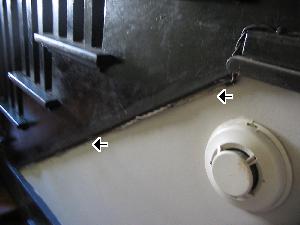| 3.1 |
EXTERIOR
DOORS, WINDOWS, SIDING, FOUNDATION, GUTTERS, ROOF, CHIMNEY
MISCELLANEOUS INFORMATION, (REFER TO REPORT
PICTURES)
|
| 3.2 |
EXTERIOR
DOORS, WINDOWS, SIDING, FOUNDATION, GUTTERS, ROOF, CHIMNEY
MISCELLANEOUS INFORMATION, (REFER TO REPORT
PICTURES)
|
| 3.3 |
EXTERIOR
DOORS, WINDOWS, SIDING, FOUNDATION, GUTTERS, ROOF, CHIMNEY
MISCELLANEOUS INFORMATION, (REFER TO REPORT
PICTURES)
|
| 3.4 |
EXTERIOR
DOORS, WINDOWS, SIDING, FOUNDATION, GUTTERS, ROOF, CHIMNEY
MISCELLANEOUS INFORMATION, (REFER TO REPORT
PICTURES)
|
| 3.5 |
EXTERIOR
DOORS, WINDOWS, SIDING, FOUNDATION, GUTTERS, ROOF, CHIMNEY
MISCELLANEOUS INFORMATION, (REFER TO REPORT
PICTURES)
|
| 3.6 |
EXTERIOR
DOORS, WINDOWS, SIDING, FOUNDATION, GUTTERS, ROOF, CHIMNEY
MISCELLANEOUS INFORMATION
|
| 3.7 |
EXTERIOR
DOORS, WINDOWS, SIDING, FOUNDATION, GUTTERS, ROOF, CHIMNEY
MINOR REPAIRS, (REFER TO REPORT
PICTURES)
|
| 3.8 |
EXTERIOR
DOORS, WINDOWS, SIDING, FOUNDATION, GUTTERS, ROOF, CHIMNEY
MINOR REPAIRS, (REFER TO REPORT
PICTURES)
|
| 3.9 |
EXTERIOR
DOORS, WINDOWS, SIDING, FOUNDATION, GUTTERS, ROOF, CHIMNEY
MINOR REPAIRS, (REFER TO REPORT
PICTURES)
|
| 3.10 |
EXTERIOR
DOORS, WINDOWS, SIDING, FOUNDATION, GUTTERS, ROOF, CHIMNEY
MINOR REPAIRS, (REFER TO REPORT
PICTURES)
|
| 3.11 |
EXTERIOR
DOORS, WINDOWS, SIDING, FOUNDATION, GUTTERS, ROOF, CHIMNEY
MINOR REPAIRS, (REFER TO REPORT
PICTURES)
|
| 3.12 |
EXTERIOR
DOORS, WINDOWS, SIDING, FOUNDATION, GUTTERS, ROOF, CHIMNEY
MINOR REPAIRS
|
| 3.13 |
EXTERIOR
DOORS, WINDOWS, SIDING, FOUNDATION, GUTTERS, ROOF, CHIMNEY
MORE THAN MINOR REPAIRS, (REFER TO REPORT
PICTURES)
|





























































































































































































